The classic adage, famously uttered by Sean Connery in the film “The Untouchables,” pits guns against knives with the timeless wisdom:
“Don’t bring a knife to a gun fight.”
Knife vs. Gun
While this maxim holds its ground in many situations, it fails to address the nuances of close-quarters combat, where knives often emerge as the more favorable choice. In such confined scenarios, possessing an edged weapon can make all the difference between self-preservation and vulnerability.
Let’s delve into eight compelling reasons why knives outshine guns when the battlefield narrows, potentially settling the age-old debate of knives versus guns once and for all.
- The 21-Foot Rule: Law enforcement has long relied on the 21-foot rule, which posits that an assailant wielding a knife can cover 21 feet in the time it takes to draw and fire a gun. This rule underscores the immense pressure on someone trying to draw a firearm in such situations. Recent research from Minnesota State University-Mankato suggests that the actual distance covered can exceed 21 feet, making it essential to equip officers with edge tools as viable alternatives.
- No Line of Fire: Firearms require a clear line of fire to be effective, a luxury seldom found in close quarters. In contrast, knives can be tactically deployed with precision in various ways, minimizing the risk of missing the target.
- If You Miss…: In cinematic depictions, individuals miraculously manage to draw and fire a gun in the nick of time to thwart an attack. Real-life encounters, however, often feature fast-moving adversaries who close in too rapidly for a drawn gun to be effective. Even if you do manage to fire, there’s no guarantee of hitting your assailant, rendering you defenseless as they encroach.
- Ammunition Not Needed: Unlike firearms, knives are always “loaded,” ready for action no matter how many times they’re used.
- Fast Learner: Almost anyone can wield a knife effectively with minimal training, as slashing and cutting with a blade are instinctive actions. In contrast, mastering the use of a firearm demands a steeper learning curve.
- No Warning, Just Action: A knife’s deployment is swift and silent, lacking the need to load, manipulate safeties, or squeeze a trigger. This immediacy proves invaluable in high-stress crises, where time is limited, and maneuvering space is constrained.
- Knife vs. Gun: The Lethal Force Question: Responding to an attacker with a firearm often leaves you with one stark option: employing maximum, sometimes lethal, force. A knife, while also lethal, offers a more versatile weapon capable of diverse defensive strategies.
- Better Defense: Effective self-defense starts with situational awareness. If confronted by a knife-wielding assailant, prioritizing your safety over drawing a weapon is paramount. Assess the distance between you and your attacker and focus on creating space while avoiding the initial assault. Attempting to draw a weapon without these precautions can lead to injury. As you evade the initial attack, prepare to draw your knife or defensive tool for tactical defense.
These reasons collectively emphasize the effectiveness of knives in close quarters. While no one disputes the value of guns for security, the possession and mastery of a knife provide a broader range of options when your primary goal is self-preservation. Achieving the best chance of survival involves diligent practice until knife usage becomes second nature and muscle memory. Seek a proficient instructor, obtain practice knives, and commit to rigorous training.
Versatile Utility: Knives in Close Quarters
In close-quarters confrontations, knives offer a distinctive advantage beyond their immediate lethality. They can double as versatile tools for non-lethal purposes, such as cutting restraints or crafting improvised barriers. This adaptability, combined with their swift deployment and minimal reliance on ammunition, underscores the value of knives as not just weapons but multi-functional instruments in situations where quick decision-making can spell the difference between life and death.

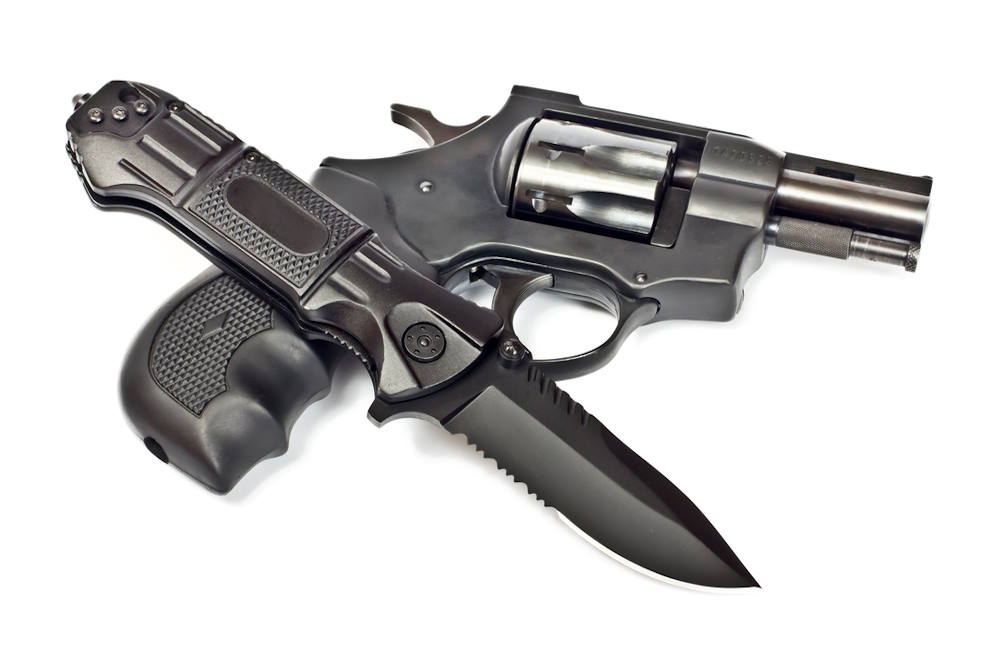
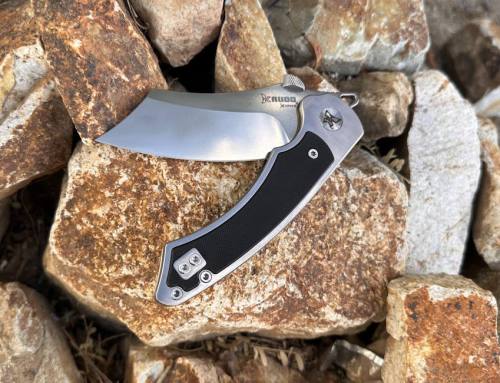
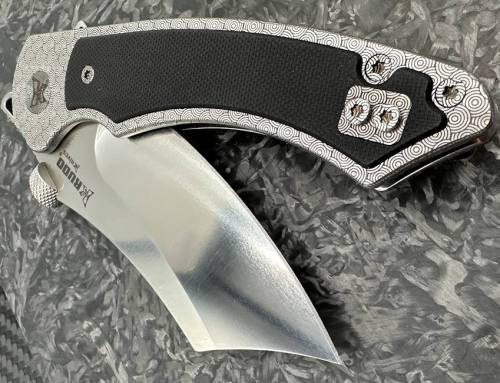
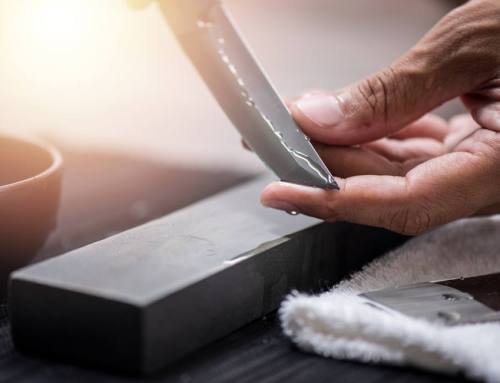
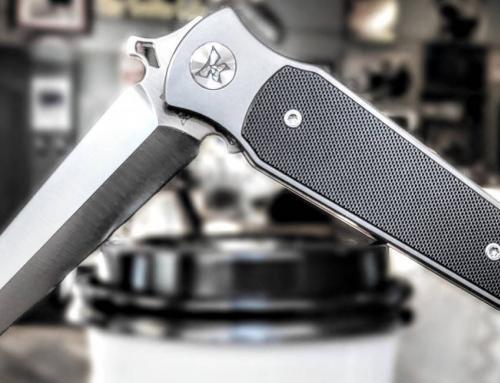
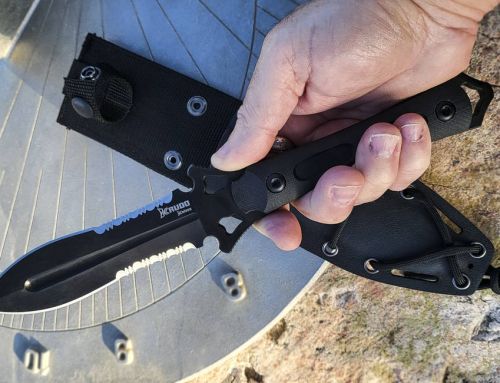
Someone should do an article about “clearing your house” with a knife. There’s nothing on the internet about it and I’ve had to do it on more than one occasion. I live in Canada our government expects us to curl up and die if someone kicks down the door and guns for self defense will land you in jail. What positions to hold the knife in at different moments (climbing stairs, opening a door, clearing a room after that &.c.)
I think it would be a valuable and well read article as there’s nothing about specifically house clearing with blades that I can find, on all the hundreds of tactical / survival sites!
I agree and believe one needs to be adept using a knife. Make sure weapons are finely honed. Practice throwing, aiming for target. Slashing stabbing as well. Point is practice. Practice sweeping a room.
Ive always made a point to have safely ladders for 2nd story. Practice drills for fires any situation are important. Especially with kids.
You may need to use grenade, flashbangs, smoke bombs along with a big knife (sword or axe)
You can’t clear a house with a knife. Cmon!! You’re just being sarcastic. Separated lethal weopon such as clearing a house will always be a ranged weapon. Knife will always win in close quarters less than 20 feet. Guns are good when you have distance. Trust me. I’ve been trained by some of the best.
And who are the best so that I may also be trained?
A few good thoughts here…some not so good. The 21-foot rule just means that you may not be able to take the attacker out before they get close enough to harm with their knife. It doesn’t leave you “defenseless.” Keep in mind, too, that it is just a “rule.”
One has to be in the front of the “line” of attack of a knife to be harmed by such, too. Now, maybe what was meant to be stated was that a firearm has a direct line of attack from the muzzle…using a fist or a knife can be more difficult to dodge, but bullets travel a lot faster…just a lot of trouble here in setting down some hard and fast rules of engagement differences.
If you miss…then you just continue firing as they move in closer. Yes, at extremely close distances, a knife can be very effective (tissue damage vs. shock, etc.)…but this article seems to be very one-sided.
For defensive purposes, one should be not having to load their firearm…and there are plenty of firearms that do not have eternal a safety and such, Is a knife a more inherent defensive tool? Perhaps, but that’s a fine line…and no one near the given weight of this point in the article.
I’m not sure what the lethal force question point is really trying to say… A firearm and a knife are both always lethal/deadly force, as this article states. But a knife is a more elegant weapon? Okay…
Yes. Agreed that the focus should be on protection…by any means necessary.
I own several knives, but have never left home with one
Two questions: how large should a knife be for effective self defense, and also, how sharp? I am a vertically challenged older lady.
Barbara, To answer your 2nd question first, any knife you carry should always be sharp, as an example, the knife should be sharp enough to easily cut 550 paracord. The first question of how large of a knife should you carry, is really a personal choice. If you use the knife for purposes of everyday use, like opening boxes, or mail or cutting materials like rope, twigs, paper, cardboard, plastics, etc. then you want a knife you are comfortable handling. Rather than just looking at carrying a knife for self-defense, look at it like it is an everyday tool. This way, if you are ever in a situation where you need to rely on the knife as a self defense option, you will be familiar with the feel, sharpness, weight and capabilities you have with the knife. I always recommend training for such a circumstance. If you are considering that it is necessary to use your knife for self defense, then I recommend you find a class that is geared toward your particular situation that you mentioned above.
How do you find someone to teach you ?
What are you’re intentions is something to be considered. Bayonets are never sharpened because it is easier to repair a wound made by a sharp knife than a blunt edged bayonet used for thrusting.
Obviously mike doesn’t understand how to.clear your house with a knife..regular throwing knives usually are carried more than one at a time and a good knife person can throw them underhanded like a softball pitcher and your defense is basically zero..people speak without knowing much..
I have been training martial arts my whole life. In close quarter combat a knife is brutal. I have performed the experiment that was performed on me against my BJJ training partners, wrestlers I coach. At MMA gyms, Muay Thai, boxing gyms, wing Chun, Krav Maga (these guys got it the worst because they don’t spar and train k ice disarms that trains you to go for the knife- If you try this and you’re great at it you will still get the shit car you but hopefully survive) well rounded pro MMA fighters etc. Names you have heard of. All you do is take a large red magnum marker and give it to the less experienced man and put on the face shields and mouthpiece, shin guards and gloves (for the empty hand attacker) so that knife attacker is protected somewhat but can hold the knife (later when got practice knifes which were close to real knive in weight and ability to grip it and put red stamp ink all over the blade. Everyone wore cheap white long underwear to cover the kegs and arms so you could she the extent of the damage The unarmed man’s job is to disarm or defeat the opponent with minimal damage. So if he land a light overhand right out of the gate or a head kick, the knife guy losesWhat typically happens even with new guys, is the advanced guy thinks he did ok until he looks at his shirt and realized he got stab and sliced a dozen times before getting the knife away from the attacker or scoring a kill/KO shot. Whenever it went to the ground, the knife fighter would let himself get clinched and just gut the unarmed guy. On the way down usually switching hands and stabbing repeatedly into the neck bald eta Obviously the empty handed guy is not trying to kill the guys, but if a guy has a knife, it is so easy to duck someone up. All you need is contact. I practice with my push dagger on my BOB (Water loaded body opponent bag-the torso and head with the muscular build and thick neck. The push dagger cuts through this ultra dense rubber easily. It would cut through a body with less force than a light push. You could easily spill a trained fighters entrails all over the ground while carving their arms and kegs into carne asada. Martial arts other than the one punch or kick knockout assuming you take no damage is the only scenario that could go your way. If you are a huge trained fighter against an untrained small terrified man or woman you will probably get cut badly but survive and win. If you are against a. Committed knife wield who knows how to lunge swing and stab, the odds of not being killed or disfigured are not good. Those Kali knife fights have an advantage but they will get hurt even if they too have a knife. If the old days I used to think a guy with a bat had an advantage. Hii I s weapon is longer etc If a guy with a knife stays out of range or lets the guy swing then closes the gap the knives are nasty. I watched a prison b CO and Cop video on knife attacks showing footage and aftermaths. It’s horrible. Look at what OJ did with a knife or the Manson family (mostly females who were totally untrained with a folding buck knife. It was a massacre. If you have a knife and are a skilled butcher you will fuck guys up way better than any martial arts guy. You hack, cleave, saw, stab all day through heavy bone and connective tissue of much denser animal muscle. Watch z gangs of New York. Daniel Day Lewis plays a real character from American history named Bill the butcher. He was a gang member and a knife fighting expert. He would school some Kali expert, Because while they’re drilling with plastic knives, he spends eight hours a day lifting and cutting heavy hunks of meat. That is literally all it takes to be a bad ass knife lighter. If you’ve boxed and have some foot work and are aware of the deadlines of the blade. When you were armed with a knife you are unstoppable unless somebody has a gun drawn and it has a lot of stopping power. Some guy is 20 feet away with a 22 pistol he better hit you in the eyeball because you’ll get to him and get him before he kills you
“What typically happens even with new guys, is the advanced guy thinks he did ok until he looks at his shirt and realized he got stab and sliced a dozen times”
NONSENSE
I have been doing full contact martial arts for years and I can’t even hit some of the fighters when sparring.
If I had a knife a
Tried to fight any unarmed person who has even minimal fighting ability i would be completely helpless and it would be impossible for me to do any damage to him
So, let’s see….in a self-defense situation inside seven yards, I’m better off taking the time to draw a knife (which I’m carrying, where, exactly, that’s easier and quicker to get to than a gun?) and WAITING for the knife-wielding attacker to get close enough to cut me TOO, than I am drawing a gun and turning the attacker’s insides into road kill with several nearly-half-inch chunks of lead traveling at twice the speed of sound? Do I have this right? Check!
I agree with all that was said in this article. But, would these same rules apply to someone that is older but in reasonably good shape (over 70)?
There are many things to consider at any age, but particularly as we get older.
Do you practice deployment and use? Is your knife something you not only carry on a regular basis but are extremely familiar and comfortable with?
Do you physically train? These questions really lead to knowing and understanding your abilities as well as your limitations and your tools of choice,
You may have to adjust how you carry your tool. Maybe it is easier to draw your knife in reverse grip rather than point forward.
Sometimes a gun is just not an option depending on the state and the location, Regardless of what you carry, or your age, practice is a must.
On the bright side, an edged tool can peel an apple, open a box, cut a rope. It’s a great utility tool!
Seems alot of people missed the point of thr article. Yes in most situations a gun will be better.
The situation in the article is very precise. 21ft or closer. Gun is holstered knife may or may not be we’ll say it was.
Average sprint speed is 15mph for an average person. That’s 22 ft per second, this is where the 21 ft rule comes from btw.
So you’re standing there with a holstered gun, a guy pulls a knife and starts to charge. You have anywhere from a little less than a second to a little more than a second to draw your gun, make your gun ready if it isn’t, aquire a target, and fire. All the while dealing with the stress of a homicidal maniac charging you with a knife.
In the Marine corps martial arts program we did drills on this. I’d like to think we were well above average on both physical fitness and training on both weapons. Roughly 7 out of 10 times the guy with the knife won. This also didn’t factor in the stress of actually being killed either, no rounds in the pistol and the knife was a hard plastic dull knife.
Thank you, T Freedom, for your feedback, your support and for getting the “point”!
The importance of knowing how to use and fight with an edged weapon can’t be disputed. Often it is a better choice. However, unless you are exceptionally well trained and in excellent physical shape, there is no reason to believe that the person threatening you with a gun, no matter how close or far, can be neutralized by a weapon that requires them to be within arms reach. Clearly, the author of this post has never been in a combat situation. Or, ever have been attacked before. However, in the mundane but common situation that someone unwelcome enter my house, I’m picking up the pistol. Laws that prevent the common person from obtaining, using or keeping the best means of defense, do nothing but empower those who do not follow the law and who will be the threat!
Why not carry both if legal? Pocket knife (which is useful for more then just defense ) handgun (i use a g20sf) and a sheathed blade (i use a old ww2 bayonet when I do which depends on where I’m going to be honest)
Agreed
Much more harm results when everyone equips themselves to deal with the very unlikely threat of unprovoked attack (dependent on your daily routine/profession/neighbourhood etc).
There are far more accidental deaths and injuries than good guy bad guy showdowns.
Knifes are available in anywhere but gun and bullets are not available everywhere
This is quite possibly the dumbest article I have ever read.
What about using a Louisville Slugger for house clearing HAHAHAHAHA
I think there is a basic flaw to the premise of this article. If the choice is between a knife of gun, then we should assume either weapon starts holstered/sheathed, or drawn and at the ready. If this is the case, then the gun has the advantage of reach. Neither has the speed advantage if both are started at the same position of being holstered/sheathed, or at the ready. If knives were superior for CQB, both cops and military would holster their firearms for room clearing. They don’t and neither should you. The knife is primarily for backup in case the firearm malfunctions or otherwise cannot be brought into action.
Who wrote this article, Don Lemon?
Any tips on how to throw a throwing knife?
How about a club? A club makes a good weapon and can, because of being a bit bigger, allow the man with the club, (walking stick) to outreach and disarm the knife man. If you are thinking self defence, a club is good for that., you don’t always have to kill someone to protect yourself from them.
Collapsible metal ball tipped baton vs knive…bet on the baton! You can hit extended knive, hand, wrist or forearm. Knee and shoulder are good follow up hits. The head hit should be avoided as it could be fatal. Jury will admire your skills unless you pound the perp in the head while he is down. Then you might be looking at manslaughter. Don’t forget your handcuffs and take control of the knife too.
Hey it’s a hell of a choice,.A gun or a knife.An old saying,Long distance the next best thing to being there,…
What most people don’t realize is that you can’t legally defend yourself with a knife in the USA. You would be charged with a criminal offense. Don’t believe me just look it up. If you’re getting your ass handed to you and a guy is about to beat you to death and you stab him you will go to jail for assault with a deadly weapon.
More important than the weapon of choice is the intent of the person wielding it
Under most confrontations one attacks with a knife and defends with a gun
It takes motivation and courage (or insanity) to initiate a knife fight
By comparison a gun is more of a psychological protection and a cowardly offensive means
The knife attacker has serious intent to inflict serious harm and the defender just finds themselves in a wrong place/time
Also, the “proper” way to attack with a knife is to swing upward This motion is harder to deflect and takes advantage of a larger target area
Oh the internet. . . .Where Incels in their mother’s basement can be transformed into the action heroes of their favorite movies or the protagonists of the video games they love too much. What speculation abounds in all these serious comments. Ha ha ha. The phrase “don’t bring a knife to a gun fight” exists for a reason. This 21 foot idea is something completely made up by some police training manual writer. I wouldn’t say all cops are not that smart, but it is a little weird that my friends who became cops were all not the sharpest tools in the shed. And then there are those “knife guys”. If you are one of them (and this is a knife website ) you may be too close to the subject to have objectivity. Guys who are really in to knives are kinda like guys who make comments about “knifes”. That’s the fringe of the fringe of the fringe. Guys who speculate about “clearing” their house are out there. But to solve this question how about this. A knife in one hand and a gun in the other. Doesn’t that cover it all?